
Egg rolls and lumpia appear on menus from a wide range of ethnic restaurants. These traditional foods share several similarities in terms of origin, preparation and taste, but subtle distinctions make them distinct dishes with specific flavor profiles. Understanding the differences between egg rolls and lumpia allows you to successfully recreate your preferred version at home.
Origin and Terminology
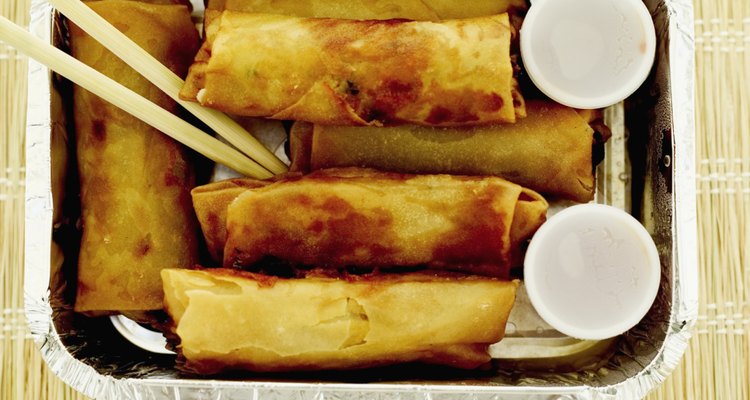
Both lumpia and egg rolls originated from a common food ancestor in China. The rolls were originally know as "lumbia," a term that translates to "moist cake," in the Min Nan language spoken in southern China. Various Asian countries then created their own versions of the basic dish, which was comprised of a thin pastry dough wrapped around minced or chopped vegetables, meats and seasonings. Today, the term "lumpia" is most commonly used to describe a dish associated with the Philippines, whereas egg rolls usually refer to a savory Chinese version of the pastry. However, the term "egg roll" can also be used as a general term for a wide range of similar wrapped-pastry dishes, including lumpia, which are sometimes called "Filipino egg rolls."
Pastry
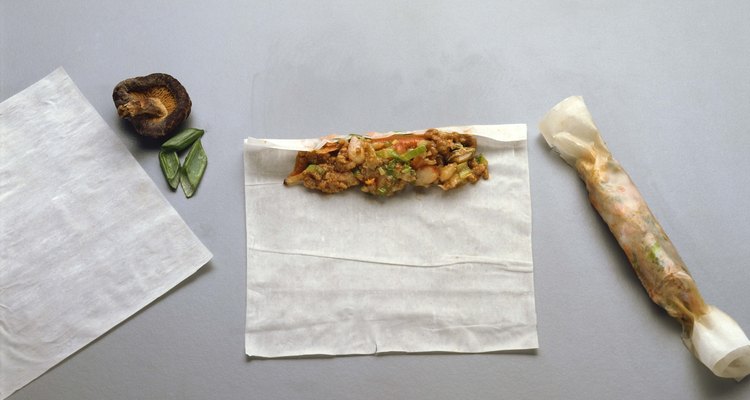
The most significant difference between lumpia and egg rolls is the pastry. Egg rolls wrappers are traditionally thicker and wider than lumpia wrappers, making for a larger, heartier roll. Lumpia wrappers are made from either rice paper or wheat flour and corn starch, but no egg. Egg roll wrappers, on the other hand, use egg in addition to white flour. Sometimes spring rolls are also referred to as lumpia; these types of rolls use a wrapper made from just flour and water.
Filling
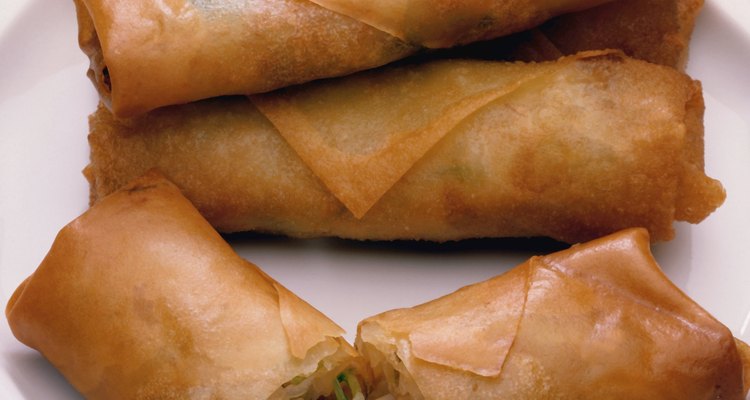
The many manifestations of egg rolls and lumpia include a wide range of filling combinations. Generally speaking, both egg rolls and lumpia are filled with a selection of shredded or chopped vegetables, including cabbage, carrots, sprouts, scallions, garlic, water chestnuts or bamboo shoots. Some versions also include minced meats, like chicken, pork, beef, or shrimp. The most significant filling distinction is in the sauces and seasonings. Lumpia often feature spicy chilis, coconut and cilantro as flavoring agents, while egg rolls more commonly use soy sauce, ginger and sesame.
Preparation

American-style egg rolls, which are commonly found in Chinese restaurants in the United States, are deep-fried to create a crispy outside layer. Lumpia can be served either fried or fresh. Fresh lumpia are typically served chilled in a thin, chewy rice paper wrapper rather than a flour wrapper. Sometimes fried lumpia are referred to as spring rolls and fresh lumpia are referred to as summer rolls.
Related Articles

List of Cuban Foods

What Is the Difference Between ...

What Is Indian Flat Bread Called?

What Is the Difference Between Scones & ...

What Foods Do Hispanics Make for ...

What Is the Difference Between a Bagel ...

What Is Indian Flatbread Called?

Difference Between Gumbo and Etouffee

Types of Fritters

What Type of Food Do People in Honduras ...
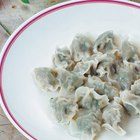
Can You Make Dumplings With Corn Starch?

Different Types of Food in India

Russian Rye Bread vs. Pumpernickel

The Differences Between a Gyro & a ...

What Is the Difference Between Cake ...
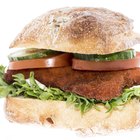
How to Cook Chicken Schnitzel

Can I Use Egg Roll Wraps for Making ...
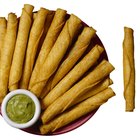
Is There a Difference Between Rolled ...

How to Egg Wash a Loaf of Challah Bread
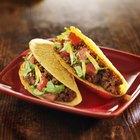
Calories in Hard Taco Shells
References
- Globalization of Chinese Food; Sidney Cheung and David Y. H. Wu
- Family-Style Meals at the Hali'Imaile General Store; Beverly Gannon and Joan Namkoong
- Philippine Quarterly of Culture and Society, Volume 31; Philipine Department of Culture and Society
Writer Bio
Hannah Wahlig began writing and editing professionally in 2001. Her experience includes copy for newspapers, journals and magazines, as well as book editing. She is also a certified lactation counselor. She holds a Bachelor of Arts in English from Mount Holyoke College, and Master's degrees in education and community psychology from the University of Massachusetts.
Photo Credits
George Doyle/Stockbyte/Getty Images